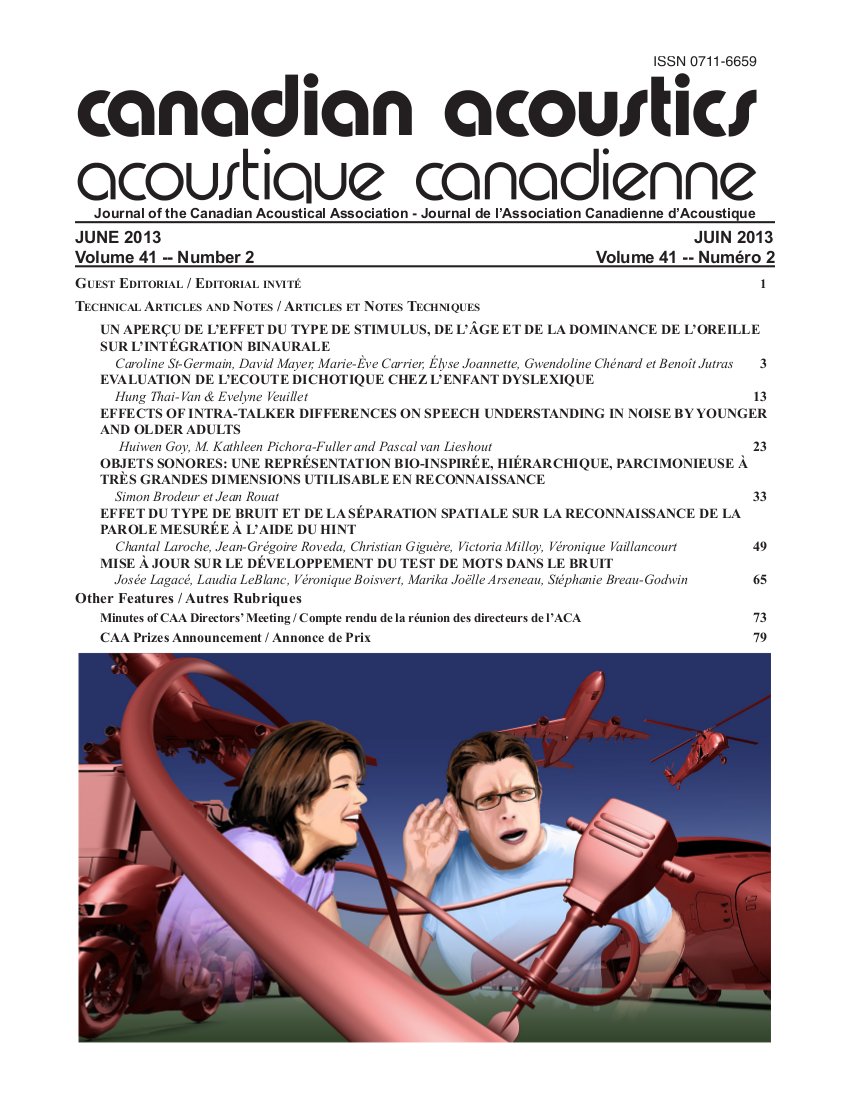Effect of the type of noise and the spatial separation of the speech recognition measured using the HINT
Abstract
Speech perception in noise is one of the most important tasks for proper communication in everyday listening situations. Multiple clinical tests have been developed to quantify difficulties understanding speech in continuous noise. However, it is now well recognized that everyday noises are fluctuating in nature, and that segments with lower noise levels allow listeners to more easily capture speech elements. The objective of the current study is to evaluate the performance of young adults with normal hearing on the HINT, under headphone sand in the sound field, using a modified 16?Hz interrupted version of the standard continuous noise. Normative data for the new intermittent noise was established in each of the three HINT noise conditions: Noise Front, Noise Right and Noise Left. When compared to performance with continuous noise, threshold improvements of 13 dB and 10 dB under headphones and of 9 dB and 6 dB in the sound field are noted in the Noise Front and Noise Side conditions, respectively. The binaural advantage (the threshold difference between the Noise Front and the Noise Side conditions) under headphones was approximately 8?9 dB and 5 dB for the continuous and intermittent noises,respectively, and 6?7 dB and 3?4 dB in the sound field for continuous and intermittent noises, respectively. Now that normative data is available for the modified 16?Hz intermittent noise, it could be useful to add at least one testing condition of intermittent noise to the clinical HINT. Such further testing would allow documentation of one’s ability to take advantage of “dips” in noise to increase speech recognition, particularly in individuals with hearing loss.
Additional Files
Published
How to Cite
Issue
Section
License
Author Licensing Addendum
This Licensing Addendum ("Addendum") is entered into between the undersigned Author(s) and Canadian Acoustics journal published by the Canadian Acoustical Association (hereinafter referred to as the "Publisher"). The Author(s) and the Publisher agree as follows:
-
Retained Rights: The Author(s) retain(s) the following rights:
- The right to reproduce, distribute, and publicly display the Work on the Author's personal website or the website of the Author's institution.
- The right to use the Work in the Author's teaching activities and presentations.
- The right to include the Work in a compilation for the Author's personal use, not for sale.
-
Grant of License: The Author(s) grant(s) to the Publisher a worldwide exclusive license to publish, reproduce, distribute, and display the Work in Canadian Acoustics and any other formats and media deemed appropriate by the Publisher.
-
Attribution: The Publisher agrees to include proper attribution to the Author(s) in all publications and reproductions of the Work.
-
No Conflict: This Addendum is intended to be in harmony with, and not in conflict with, the terms and conditions of the original agreement entered into between the Author(s) and the Publisher.
-
Copyright Clause: Copyright on articles is held by the Author(s). The corresponding Author has the right to grant on behalf of all Authors and does grant on behalf of all Authors, a worldwide exclusive license to the Publisher and its licensees in perpetuity, in all forms, formats, and media (whether known now or created in the future), including but not limited to the rights to publish, reproduce, distribute, display, store, translate, create adaptations, reprints, include within collections, and create summaries, extracts, and/or abstracts of the Contribution.


